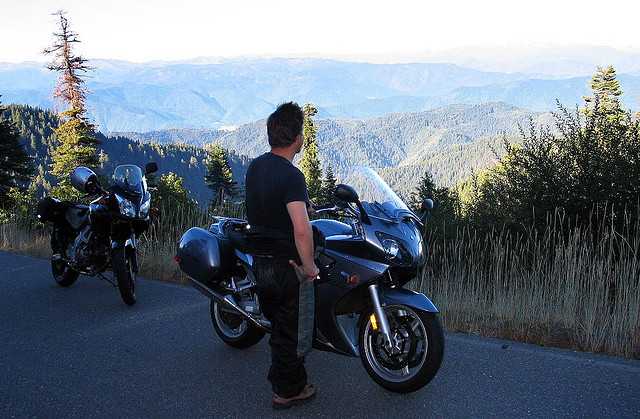We are a species that thrives on discovering the undiscovered, catching glimpses of the unseen and telling stories about the unverified. Our myths and tall tales are full of sea monsters, giants and demons – some of which have managed to cross the gaping chasm between fiction and reality and get lodged in the public conscious as “real…ish…maybe.”
These animals are called cryptids, and though any true cryptid remains unverified while not completely discredited, some of our most mythologized beasts have been found to have a base in truth. For instance, maritime lore is filled with stories of a giant squid called the Kraken but the would-be cryptid gained some veracity when New Zealand fisherman brought in a Colossal Squid in 2007 that measured 33 feet.
[social]
This lingering hope that many people harbor—to prove the rumors true or at least find out where they converge with truth—is probably part of the reason why so many people feel compelled to track species that we have no hard evidence of. Cryptid enthusiasts (who are very much out there, check online) are on a quest to be one of the first to see something that is extraordinary and uncommon. This is very similar to the reasons why many people travel, the search for an experience that is rare and at least relatively unique.
If you’re heading to one of the places where famous cryptids are commonly spotted, you might feel compelled to take a look for yourself. But you would be advised to make a few other plans too, as cryptid tracking isn’t a pastime that typically meets with great results. To help you plan, we’ve compiled a list of five great places to spot unverified animal species, along with some other activities just in case you don’t have any luck.
Mermaids – Haifa, Israel
Mermaids have been a popular centerpiece of stories told by sailors since the first boats were deemed seaworthy. This makes sense, considering that sailing was a traditionally undertaken by males who spent months at a time at sea longing for a woman’s touch.
Recently, sightings of a young mermaid in and around the city of Haifa in Northern Israel have been pouring into government offices and newspapers. The municipality of Kiryat Yam has taken the claims so seriously that they’ve offered a one-million dollar reward to anyone who can get photographic proof of the sea nymphs.
This bounty has already given a healthy boost to tourism in the area. With various witnesses marking the preferred visiting hours of a half fish-half girl at around sunset, the shores of Kiryat Yam and Haifa (just a few miles south) have become packed with would be reward winners.
If you go and the Mermaids won’t show:
Visit the Shrine of the Báb and the Baha’i Gardens at the base of Mount Carmel in Haifa. This domed temple was recently listed by UNESCO as a World Heritage Site and is backed by perfectly manicured, terraced gardens. A stroll through the strikingly designed gardens and around the shrine offers a chance to reflect and marvel at the second most important holy place for the Baha’i. Incidentally, the first most holy place, the Shrine of Baha’u’llah, is situated just north of Kiryat Yam—making both spots ideal oases of reflection before heading to the beach to commune with mermaids.
>>book a flight to Israel and read our Israel Travel Guide
Bigfoot – Pacific Northwest, USA
Bigfoot (also called Sasquatch) is one of the most hotly debated and often sighted cryptids. In fact, there are numerous spots in the United States and Canada that can lay claim to being the Bigfoot capital. Among these, the Pacific Northwest stands out for both the number of sightings and the prevalence of man-apes in the storytelling of local Native American tribes. There is no specific spot best known for Bigfoot sightings, though the Six-Rivers National Forest in Northern California is notable for being the site at which the famous Patterson-Gimlin film (purported to show a giant bi-ped walking through a clearing) was shot.
If you go and the Sasquatch won’t show:
The Smith River National Recreation Area, within the Six-Rivers National Forest, doesn’t need to count on Bigfoot as it’s only draw. The area showcases the Pacific Northwest at its burly, wild finest—cut by rivers and thick with towering evergreens.
The National Recreation Area has five campsites and endless hiking trails and is famous for Steelhead fishing and whitewater rafting. By the way, there are also cases of verified oddities in this area: Horned Butterwort and the California Pitcher Plant are both insectivorous plant species found within the park’s borders.
>>book a flight to the USA
Chupacabra – Puerto Rico
Definitely one of the more menacing of the popular cryptids, the Chupacabra is also the most recently identified. First spotted in the mid-nineties, the reptilian/wild dog hybrid (with spikes running the course of its spine) is known for sucking the blood from sheep and goats throughout Latin America.
Interestingly, the Chupacabra may be a case of reality imitating mythology – as several specimens of coyote and fox, appearing almost reptilian because of severe mange, and so skinny that their spines show through their skin, have been found and studied by scientists at Texas State University. They are linked to the deaths of livestock found bled to death in the area. The Puerto Rican incarnation of the Chupacabra has been blamed for thousands of sheep on the island.
If you go and the Chupacabra won’t show:
If you track Chupacabra and get skunked you should probably be happy—considering that the Vampirious beast isn’t known for being particularly cuddly.
How to spend the time then? Consider strolling through Old San Juan, a secondary island linked by bridges to Puerto Rico. Old San Juan is a picture of cobblestone charm with brightly painted buildings and whitewashed cathedrals. Many of the building are holdovers from the sixteenth and seventeenth centuries when Puerto Rico was under control of the Spanish.
This walled city is a labyrinth of one way streets best explored by foot—it’s also one of the most charming cities in the Caribbean (when cruise ships aren’t being offloaded) and definitely necessitates a camera. The San Sebastian Street Festival, held in Old San Juan every January, is widely considered the best party in the Caribbean.
>>book a flight to the Caribbean and read more about Puerto Rico
Loch Ness Monster – Loch Ness, Scotland
Nessie is probably the most famous of all cryptids and has been able to endure endless hoaxes without being completely unmasked as a myth. Unlike land-based cryptids, who are questioned because of lack of physical evidence, the Loch Ness Monster could potentially be hiding (dead or alive) in the black depths of the giant lake. Sonar studies of Loch Ness’s depths have been just interesting enough to give us hope of Nessie’s existence without producing anything definitive.
The chances of seeing “something” strange in the lake remain somewhat likely (only when compared to spotting other theorized monsters) because light distortion, floating debris, seals and the movement of certain water fowl have all been misidentified as Nessie in the past.
If you go and Nessie won’t show:
Loch Ness may be popular for its most famous long-necked inhabitant, but it remains so because of its fantastic medieval imagery. The lake and the area that surrounds it offer travelers a fine example of the Scottish Highlands. Few visitors can help but be stirred by the romanticism of The Urquhart Castle, a crumbling fortresses sitting over a fog shrouded lake which hides a monster in its depths.
The area around the lake is great for hiking—many travelers do sections of the Great Glen Way, a 73 mile track between Inverness and Fort William. The villages that dot the banks of the Loch provide a rustic atmosphere and plenty of good B & Bs.
>>look for airfare to Scotland and read about the Things to do in Scotland
Fairies – West Yorkshire, England
Like all cryptids, Fairies live in the divide between proposed reality and fantasy—yet in these modern times the fey seem more firmly planted in the mythological realm. It wasn’t more than fifty years ago, however, that Walt Disney himself was a card carrying member of the Fairy Investigation Society.
Sir Arthur Conan Doyle (creator of Sherlock Holmes, master of logic) was also a big believer in fairies and put his public reputation on the line by endorsing the Cottingley Fairies in the 1920s. Doyle supported the story of two schoolgirls who took a series of photos that appeared to show fairies interacting with them. In a 1981 interview, the girls (long since grown) admitted to staging all but one of the shots while also persisting that they really had seen fairies in Cottingley—making it as good a place as any for would be fairy trackers.
If you go and the fairies don’t show:
Try tracking another subject of countless myths (this one sure to have existed): Robin Hood. West Yorkshire, besides being the county that Cottingley resides in, is also the location of Kirklees where the famous outlaw was buried. The story goes that Robin Hood’s Aunt was trying to heal the ill archer by letting blood but drained too much and he died.
In most Robin Hood stories she is painted as a murderess who killed him deliberately. Robin Hood “winded his horn” and his right hand man Little John came to the rescue. Too late to save the Prince of Thieves, Little John buried his friend where his final arrow, shot through the window of Kirklees Priory, landed. Though Kirklees Priory and the nearby marked grave of Robin Hood are both on private land tours are sometimes granted upon request. The surrounding forests and nearby inns are rich in the unique country charm that both outlaw woodsmen and forest fairies would feel at home in.
>>book a flight to England and read more about London
Read more about:
- 7 Lakes and Their Monsters
- 10 Weird Food Delicacies from All Over the World
- 5 of the World’s Most Haunted Places
Photo credits:
Shrine of the Bab by pboyd04 on Flickr, Six-Rivers by dusted on Flickr, Old San Juan by Oquendo on Flickr, Loch Ness by seanb.murphy on Flickr, Yorkshire by deBurca on Flickr




